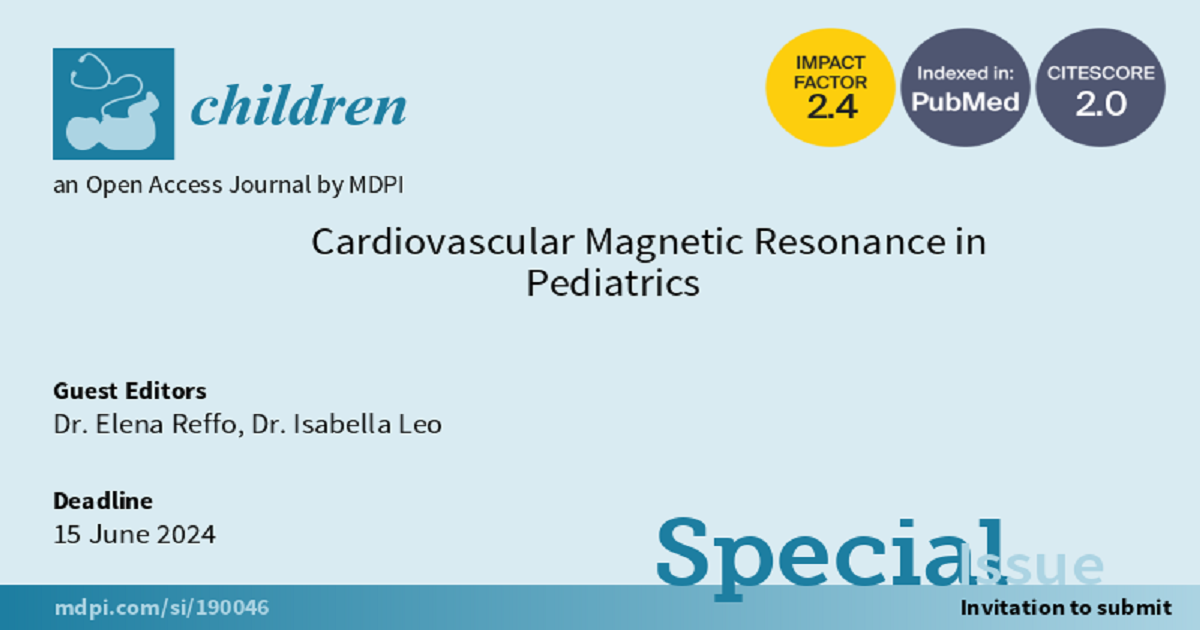Cardiovascular Magnetic Resonance in Pediatrics
A special issue of Children (ISSN 2227-9067). This special issue belongs to the section "Pediatric Cardiology".
Deadline for manuscript submissions: closed (15 June 2024) | Viewed by 626

Special Issue Editors
Interests: cardiovascular imaging; echocardiography; cardiovascular magnetic resonance
Special Issue Information
Dear Colleagues,
Recent years have seen cardiovascular magnetic resonance (CMR) emerge as a powerful and versatile tool in pediatric cardiology. This non-invasive and radiation-free technique is in fact not only the gold standard for volumetric and function assessment but also offers unique tissue characterization, providing valuable insights into several congenital and acquired heart conditions. The key role of this modality in the pediatric field is testified by the recent advances, clinical applications, and research breakthroughs that contributed to altering the care of our young patients.
The aim of this Special Issue of Children, entitled “Cardiovascular Magnetic Resonance in Pediatrics”, is to collect articles discussing these advances in detail with the ultimate goal of deepening knowledge in this challenging field.
Dr. Elena Reffo
Guest Editor
Dr. Isabella Leo
Guest Editor Assistant
Manuscript Submission Information
Manuscripts should be submitted online at www.mdpi.com by registering and logging in to this website. Once you are registered, click here to go to the submission form. Manuscripts can be submitted until the deadline. All submissions that pass pre-check are peer-reviewed. Accepted papers will be published continuously in the journal (as soon as accepted) and will be listed together on the special issue website. Research articles, review articles as well as short communications are invited. For planned papers, a title and short abstract (about 100 words) can be sent to the Editorial Office for announcement on this website.
Submitted manuscripts should not have been published previously, nor be under consideration for publication elsewhere (except conference proceedings papers). All manuscripts are thoroughly refereed through a single-blind peer-review process. A guide for authors and other relevant information for submission of manuscripts is available on the Instructions for Authors page. Children is an international peer-reviewed open access monthly journal published by MDPI.
Please visit the Instructions for Authors page before submitting a manuscript. The Article Processing Charge (APC) for publication in this open access journal is 2400 CHF (Swiss Francs). Submitted papers should be well formatted and use good English. Authors may use MDPI's English editing service prior to publication or during author revisions.
Keywords
- cardiovascular magnetic resonance
- congenital heart disease
- pediatric magnetic resonance imaging
- pediatric cardiology







